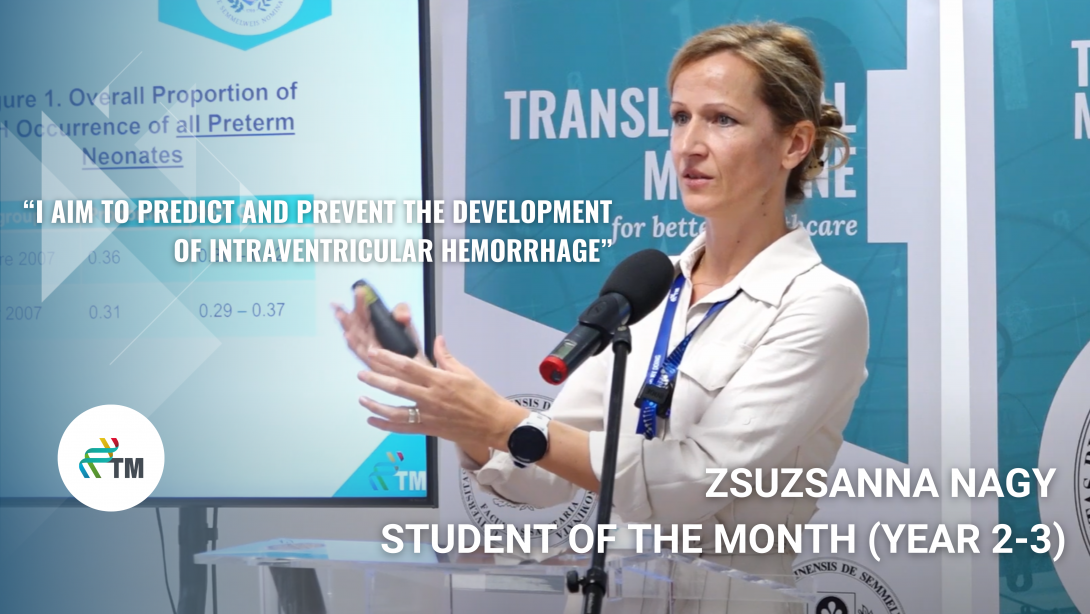
Intraventricular hemorrhage (IVH) is a frequent complication of prematurity, but its exact onset is unknown. All that is certain is that it typically occurs within the first three days of life. Dr. Zsuzsanna Nagy, who was named Student of the Month (Year 2-3) at the Centre for Translational Medicine in September, is trying to clarify this issue. Better knowledge of the onset of IVH will help clinicians to gain a deeper understanding of the contributing factors and pathomechanism of IVH, and can be a tremendous help for them in decision-making.
Zsuzsanna Nagy has always had a desire to be a clinician, which led her to work as a nurse during her university years. After graduating, she started her medical career at the Honvéd Hospital, where she specialized in pediatrics and neonatology. After completing her training, she gave birth to her children and started working as a neonatologist a few years later. She took a position at the Department of Obstetrics and Gynecology, Üllői Perinatal Intensive Care, Semmelweis University , where she has been working for five years and where she became interested in research. “I remember when Professor Hegyi visited our clinic and presented the Centre for Translational Medicine's Ph.D. program, and I immediately felt that their training was for me. For me, it was important to have statisticians and methodology supervisors to support our work at CTM. I also appreciated that the program allows us to research and find answers to problems that arise in practice.”
Dr. Nagy has always been interested in interdisciplinary questions such as the timing of umbilical cord clamping at birth. “When I started my medical career in the 2000s, doctors provided immediate umbilical cord clamping after birth. Later on, more and more scientific papers were published showing that this was not the best solution. It was already assumed that the timing of umbilical cord clamping could have an impact on the risk of intraventricular hemorrhage (IVH) in preterm infants.”
While researching the literature on this topic, Dr. Nagy came across the articles of Arjan B. te Pas, who is an advocate of physiological-based cord clamping. In this method, physicians clamp the umbilical cord when the placenta has already handed its role to the lungs. This technique allows a smooth transition to extrauterine life and might reduce the risk of intraventricular hemorrhage in babies. “I was very pleased that I was introduced to Professor Arjan B. te Pas at a conference, and later, he became my supervisor alongside Professor Miklós Szabó. We have been using physiological-based cord clamping for babies in our clinic for almost four years, and we have also conducted our own research. One of our results will soon be published in a renowned scientific journal.”
In that research, Dr. Nagy has analyzed data over the last 40 years to clarify when intraventricular hemorrhage occurs. The results showed that it occurs in only 10 percent of cases in the first six hours, while the majority develop on the first or second day after birth. Based on this, clinical research can be launched to identify the alarming signs of intraventricular hemorrhage and to prevent it. Dr. Nagy already gave a presentation on this topic at the Congress of Joint European Neonatal Societies last September and was recently invited to Belgium to give a lecture at the event of the Belgian Club of Hungarian Scientists.
(Emese Szabó)